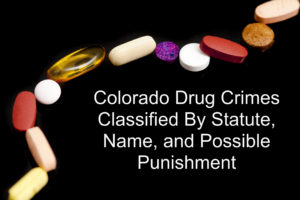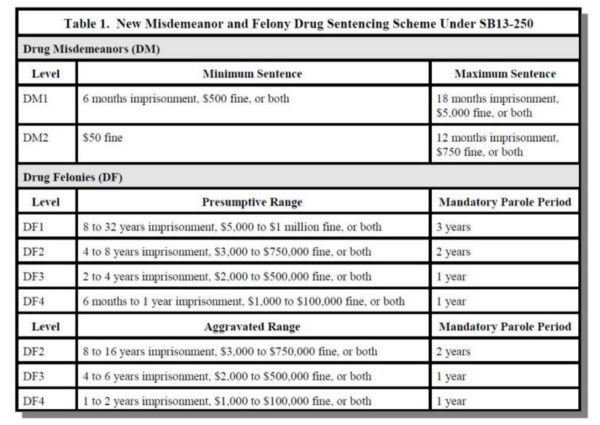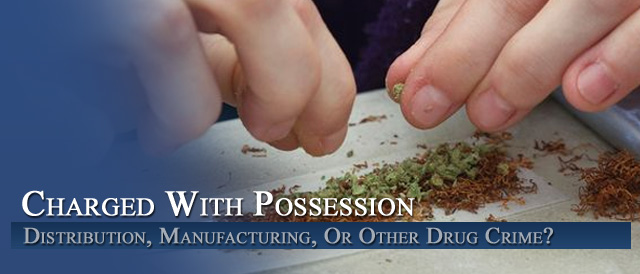




Colorado Drug Crimes Classified By Statute, Name, and Possible Punishment
By H. Michael Steinberg Colorado Drug Crimes Criminal Defense Lawyer – Attorney
Colorado Drug Crimes Classified By Statute, Name, and Possible Punishment – To better understand the Colorado drug crime you may find on your charging document – you must start with how it is classified under Colorado’s drug penalty scheme. Here is a chart of penalties you can check after you find the crime below:
[CLICK HERE AND NEXT PAGE ON CHART TO ENLARGE]
DF-1 Felony:
Presumptive range: 8- 32 years – Mandatory minimum of 8 years (DOC)
18-18-405: distribution/manufacture/possession with intent to distribute more than 225 grams of Sched I/II (more than 8 ounces) or more than 112g of methamphetamine or heroin (more than 4 oz)
18-18-407(1)(b): offense was part of a pattern of manufacturing, sale, dispensing, or distributing which constituted a substantial source of that person’s income and in which the person manifested special skill or expertise.
18-18-407(1)(c): offense was part of a conspiracy to distribute, manufacture, sell drugs and the defendant initiated, organized, plan, finance, direct, etc part of conspiracy.
18-18-407(1)(d): introduction, distributed, or imported into the state more than 14 grams of any schedule I or II or more than 7g of methamphetamine or heroin.
18-18-407(1) (e): sale, distribution, possession or importation in excess of 50 pounds of marijuana or 25 pounds of concentrate. (Also, 18-18-406: distribution over 50 pounds of marijuana or over 25 pounds of concentrate.)
18-18-407(1) (f): use or possession of deadly weapon or firearm during commission of drug crime (NOTE: requires sentencing in the aggravated range)
18-18-407(1)(g): use of a child for the purposes of drug dealing
18-18-407(1)(h): offense was part of a continuing criminal enterprise- 5 or more people involved in 2 or more drug crimes on separate occasions.
18-18-407(2)(a): drug distribution/manufacture within or upon the groups of school, vocational school or public housing development or within 1,000 feet of the perimeter of any school, public housing, etc.
18-18-405: sale of a Schedule I or II controlled substance (any quantity) other than marijuana to a minor by adult and the adult is at least 2 years older than the minor
18-18-406: sale to minor of 2.5 lbs or more of marijuana or more than 1 lb of concentrate (hash) if adult is at least 2 years older than the minor
DF-2 Felony
Presumptive range: 4-8 years – Aggravated range: 8-16 years
18-18-405: distribution/manufacture/possession with intent to distribute more than 14 grams up to 225 grams of Schedule I/II (1/2 oz – 8 ounce) or more than 7g – 112g of methamphetamine or heroin (1/4 oz–4 oz)
18-18-405: sale of a Schedule III, IV, or V controlled substance other than marijuana to a minor by adult and the adult is at least 2 years older than the minor
18-18-406: distribution of more than 5 pounds of marijuana but not more than 50 pounds of marijuana or more than 2 1/2 pounds but not more than 25 pounds of concentrate
18-18-406(7): sale/transfer to a minor by adult of more than 6 oz of marijuana but not more than 2.5 pounds or more than 3 oz but not more than 1 pound of concentrate if adult is at least 2 years older
18-18-406.2: sale of synthetic cannabinoids or salvia by adult to minor and adult is more than 2 years older.
18-18-412.5: unlawful possession of ephedrine, pseudoephedrine, or phenylpropanolamine with intent to manufacture methamphetamine and amphetamine.
DF-3 Felony
Presumptive range: 2-4 years – Aggravated range: 4-6 years
18-18-405: distribution/manufacture/possession with intent to distribute up to 14 grams of Schedule I/II (up to 1/2 oz) or up to 7 grams of methamphetamine or heroin (1/4 ounce)
18-18-405: distribution of more than 4 grams of Schedule III and IV
18-18-406: distribution of more than 12 ounces but not more than 5 pounds of marijuana or more than 6 ounces but not more than 2 ½ pounds of concentrate; cultivation of more than 30 marijuana plants
18-18-406: knowingly process or manufacture marijuana or concentrate or knowingly allow land owned, occupied or controlled for same except as authorized pursuant to part 3 of article 22 of title 12 CRS.
18-18-406(7): sale/transfer to a minor by adult of more than 1 oz but not more than 6 oz of marijuana or more than 1/2 oz but not more than 3 oz of concentrate if adult is more than 2 years older
18-18-406.2: distribution, sale of synthetic cannabinoids or salvia divinorum
18-18-412.7: sale or distribution of materials to manufacture controlled substances
18-18-416: inducing consumption by fraudulent means
18-18-422: distribution of imitation controlled substance (adult to minor and adult at least 2 years older)
18-18-423: manufacture, deliver or possess with intent a counterfeit substance
DF-4 Felony
Presumptive range: 6-12 months – Aggravated range: 1-2 years
18-18-403.5: simple possession of Schedule I/II drugs or ketamine / flunitrazipam
18-18-405: transfer without remuneration of up to up to 4 grams of Schedule I/II or up to 2 grams of methamphetamine or heroin
18-18-405: manufacture, dispense, sell, distribute, possession with intent 4g or less of Schedule III or IV
18-18-406: cultivation of more than 6 but less than 30 marijuana plants
18-18-406: possession of over 12 ounces of marijuana or over 3 ounces of hash
18-18-406:distribution of more than 4 ounces but not more than 12 ounces of marijuana or more than 2 ounces but not more than 6 ounces of concentrate
18-18-415: obtaining controlled substance by fraud and deceit
18-18-406(7): sale/transfer to a minor by adult of 1 oz or less of marijuana or 1/2 oz or less of concentrate if adult is more than 2 years older
18-18-422: distribution of imitation controlled substance (adult to adult)
DM-1 Misdemeanor (sentence range 6-18 months)
18-18-403.5 (2)(b)(II)(c): possession schedule III, IV, V (except flunitrazepam and ketamine)
18-18-405: transfer with no remuneration of 4 grams or less of schedule III, IV
18-18-405(2)(a)(IV)(A): sale/distribution of schedule V (with or without remuneration)
18-18-406(4)(b): marijuana possession more than 6 ounces but not more than 12 ounces or 3 oz or less of concentrate, except as otherwise provided by Amendment 64.
18-18-406: sale/distribution of 4 oz or less of marijuana or 2 ounces or less of concentrate
18-18-406.5: unlawful use of marijuana in a detention facility
18-18-406(7.5)(a): cultivation of up to 6 marijuana plants
18-18-411: maintaining, renting or making available property used for dist/manufacture of controlled substances
18-18-422(3): promotion of distribution of imitation controlled substances via advertising
DM-2 Misdemeanor (sentence range 0-12 months)
18-18-404(1)(a): use of scheduled drugs
18-18-406(2): failure to appear in court on marijuana summons
18-18-406(4)(a): possession of more than two ounces but not more than 6 ounces of marijuana
18-18-406.1: unlawful use or possession of synthetic cannabinoids or salvia divinorum
18-18-412: abusing toxic vapors
18-18-412.8: retail sale or purchase of methamphetamine precursor >3.6g in 24 hours; sale to minor
18-18-414(e-n): pharmacy and hospital violations related to refills on Schedule III, IV, V, failure to maintain required records, failure to obtain required license…. etc. (currently just listed as “misdemeanor” without class level)
18-18-429: sale/delivery or manufacture with intent to deliver drug paraphernalia
18-18-430: advertising to promote sale of drug paraphernalia
Petty Offenses
18-18-406(1): marijuana possession 2 ounces or less except as otherwise provided by Amendment 64.
18-18-406(3)(a)(I): public display or consumption of 2 ounces or less of marijuana
18-18-406(5): transfer without remuneration of 2 ounces or less of marijuana
18-18-413: authorized possession of controlled substance in wrong container
18-18-428: possession of drug paraphernalia
The Scheduled Drugs – Definitions
Schedule I drug – has a high potential for abuse; has no currently accepted medical use in the US; and lack accepted safety for use under medical supervision. Examples include heroin, psilocybin (mushrooms), LSD, GHB, peyote, and marijuana.
Schedule II drug – has a high potential for abuse; currently accepted for medical use in the US; and abuse may lead to dependence. Examples include cocaine, methamphetamine, oxycodone, morphine, fentanyl .
Schedule III drug – has a potential for abuse that is less than drugs included in Schedules I/II; has currently accepted medical use in US; and abuse may lead to moderate or low dependence. Examples include Vicodin.
Schedule IV drug – has a low potential for abuse relative to drugs in Schedule III, has currently accepted medical use in US, and abuse may lead to limited dependence relative to drugs in Schedule III.
Schedule V drug – has a low potential for abuse relative to substances included in Schedule IV, has currently accepted medical use in treatment, and abuse may lead to limited dependence relative to drugs in Schedule IV.
Colorado’s Controlled Substance Classifications – Quick Examples
Each state classifies controlled substances (including both illicit drugs and those restricted to prescription use) are organized into “schedules” for purposes of crime classifications and penalties.
The drug classifications in most states, including Colorado, are modeled after those established by the federal government.
Examples of specific drugs listed in each of the controlled substance schedules are listed below:
Schedule I: heroin, LSD
Schedule II: opium, codeine, methamphetamine
Schedule III: hydrocodone, anabolic steroids, ketamine
Schedule IV: lorazepam
Schedule V: buprenorphine
Colorado Drug Crimes Classified By Statute, Name, and Possible Punishment.
If you found any of the information I have provided on this web page article helpful please click my Plus+1 or the Share buttons for Twitter and Facebook below so that others may also find it.
The reader is admonished that Colorado criminal law, like criminal law in every state and at the Federal level, changes constantly. The article appearing above was accurate at the time it was drafted but it cannot account for changes occurring after it was uploaded.
If, after reading this article, you have questions about your case and would like to consider retaining our law firm, we invite you to contact us at the Steinberg Colorado Criminal Defense Law Firm – 303-627-7777.
Never stop fighting – never stop believing in yourself and your right to due process of law. You will not be alone in court, H. Michael will be at your side every step of the way – advocating for justice and the best possible result in your case. H. Michael Steinberg is passionate about criminal defense. His extensive knowledge and experience of Colorado Criminal Law gives him the edge you need to properly handle your case
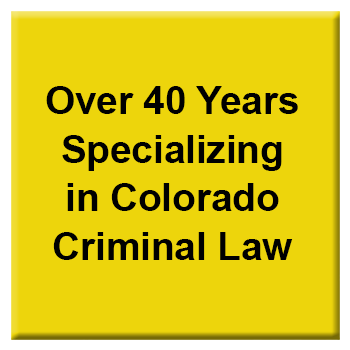 ABOUT THE AUTHOR: H. Michael Steinberg – Email The Author at:
ABOUT THE AUTHOR: H. Michael Steinberg – Email The Author at:
A Denver Colorado Criminal Defense Lawyer – or call his office at 303-627-7777 during business hours – or call his cell if you cannot wait and need his immediate assistance – please call 720-220-2277.
“A good criminal defense lawyer is someone who devotes themselves to their client’s case from beginning to end, always realizing that this case is the most important thing in that client’s life.”
You should be careful to make a responsible choice in selecting a Colorado Criminal Defense Lawyer. We encourage you to “vet” our firm. Over the last 40 plus years – by focusing ONLY on Colorado criminal law – H. Michael has had the necessary time to commit to the task of constantly updating himself on nearly every area of criminal law, to include Colorado criminal law and procedure and trial and courtroom practice.
Putting more than 40 years of Colorado criminal defense experience to work for you.
H. Michael works hard to get his clients the best possible results in and out of the courtroom. He has written, and continues to write, extensively on Colorado criminal law and he hopes this article helps you in some small way – Colorado Drug Crimes Classified By Statute, Name, and Possible Punishment.
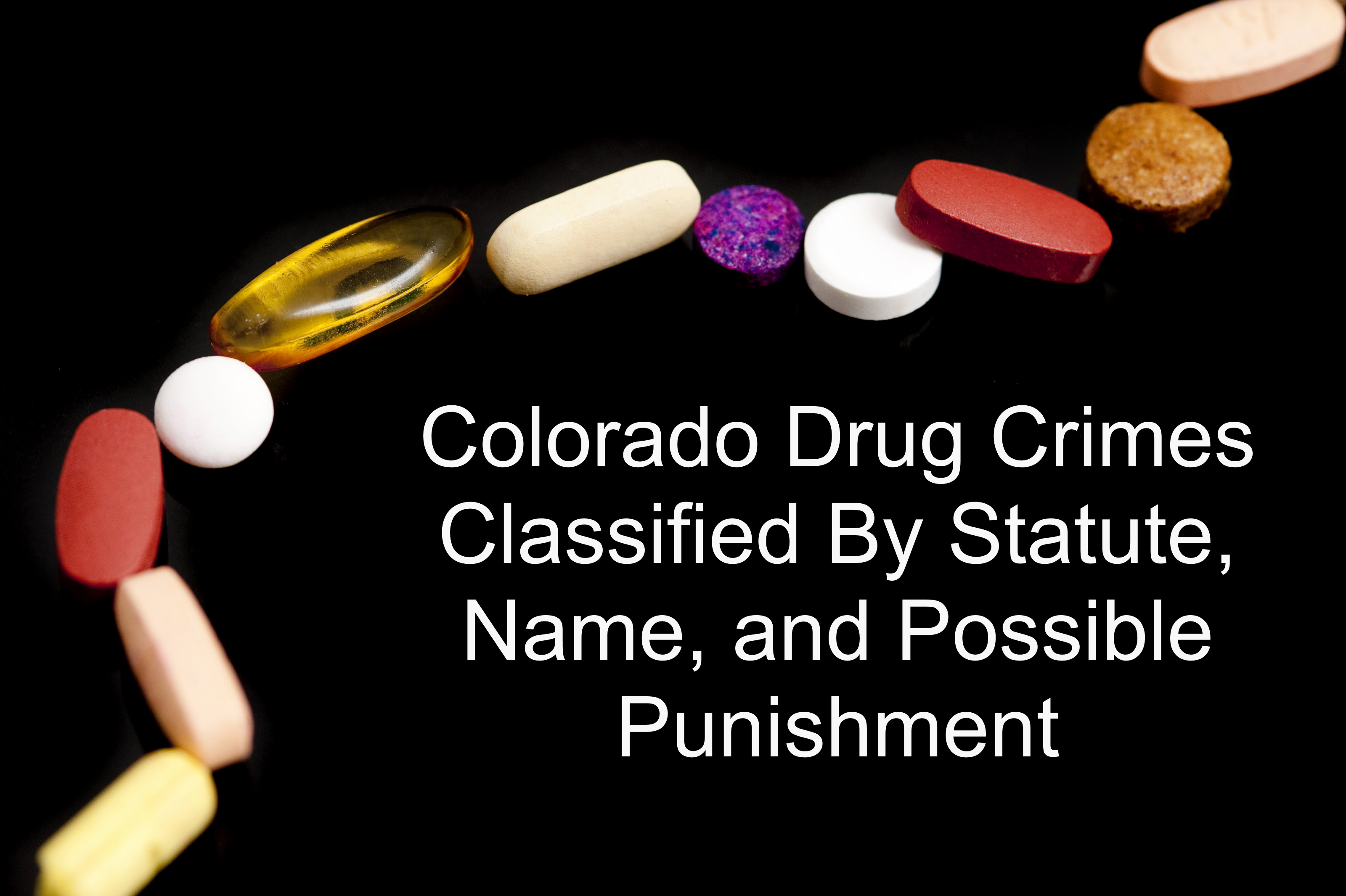
Other Articles of Interest:
- Colorado Drug Crimes – Possession of Analog – (Analogue) Drugs – A Controlled Substance?
- Colorado Law: Basic Information about Drug Crime Cases
- Colorado Accomplice Law – Understanding How You and Your Friend Can Be Prosecuted For The Same Crime When You DId Much Less
- Colorado Police Arrest Powers For Minor Traffic Violations
- 2011 Changes to Colorado Drug Crimes Laws: Synthetic Marijuana




